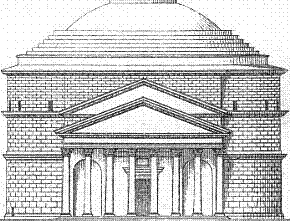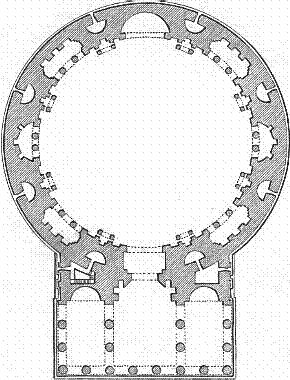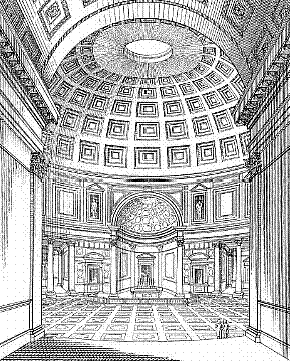| The Pantheon |
|
Images: |
Ward-Perkins says, "With the building of the Pantheon . . . architectural thinking had been turned inside out; and henceforth the concept of interior space as a dominating factor in architectural design was to be an accepted part of the artistic establisment of the capital" Perhaps we should rather say: Architectural thinking had been turned "outside in!"
|
One of the most wonderful buildings in the world which conveys its ideas is the Pantheon. The Pantheon is really a world within a world. The client, Hadrian, and the architect, whom I don't know the name of, saw the demand of this pantheonic requirement of no religion, no set ritual, only inspired ritual. He saw the round building, and a very large building. I imagine that he probably thought the building should be at least 300 feet in diameter; he changed his mind because there were no craftsmen who would make such a building, and it was out of the stream of economy. Economy meaning here that there's no man around to do it. I don't mean money--I don't mean budget--I mean economy. And so the Pantheon is now a hundred and some feet in diameter. The dome, the first real dome made, was conceived with a window to the sky. Not because of ethereal reasons, but because it's the least distracting, the one that is most transcending. And there is a demand from saying nothing specific, no direction; that's what form says to you, feeling and philosophy. It says no direction to this . . . no oblong . . . a square not satisfying here . . . too far and away at the corners. The round building is something which is irrefutable as an expression of a world within a world.
|
3716c
3716f
| Quondam © 2018.01.19 |



